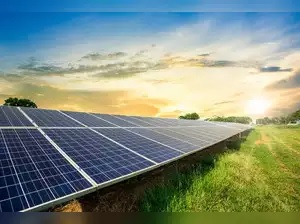
‘Go hard and go big’: How South Australia got solar panels onto one in every three houses – EQ
In Short : South Australia’s successful push for solar energy adoption is a testament to the state’s ambitious renewable energy initiatives. By adopting a “go hard and go big” approach, South Australia encouraged widespread solar panel installation, with one in every three houses now equipped with solar panels. The state’s commitment to renewable energy and efforts to incentivize solar adoption have paved the way for a cleaner, more sustainable energy future. This achievement showcases the positive impact of government policies and public awareness campaigns in driving solar energy adoption at a large scale.
In Detail : For a brief period over several weekends this spring, the state of South Australia, which has a population of 1.8 million, did something no other place of a similar size can claim: generate enough energy from solar panels on the roofs of houses to meet virtually all its electricity needs.
This is a new phenomenon, but it has been coming for a while – since solar photovoltaic cells started to be installed at a rapid pace across Australia in the early 2010s. Roughly one in three Australian households, more than 3.6m homes, now generate electricity domestically. In South Australia, the most advanced state for rooftop solar, the proportion is nearly 50%.
No other country comes close at installing small solar systems on a per capita basis. “It’s absolutely extraordinary by world standards,” said Dr Dylan McConnell, an energy systems analyst at the University of New South Wales. “We’re streets ahead.”
There was no overarching plan that made Australia the world leader in household solar PV. Analysts mostly agreed that it was a happy accident, the result of a range of uncoordinated policies across tiers of government. Many were subsidy schemes that were derided as too generous and gradually scaled back, but the most important – an easy-to-access, upfront national rebate available to everyone – endured. It has helped make panels cost-effective and easy to install.
Cost was a big consideration for the Jamiesons – Sean, Deb and their 19-year-old daughter, Molly – when they installed a system on the four-bedroom house in a beachside suburb in South Australia’s capital, Adelaide, a decade ago. They upgraded to a larger 8kW system during a home renovation five years later, and have installed two batteries, the first subsidised as part of a state government scheme trialling household energy storage systems to help stabilise a power grid that increasingly runs on variable solar and wind power.
Sean Jamieson, a pilot with the airline Jetstar, said the setup had been “incredibly beneficial”, in part because his family uses a range of energy-hungry equipment, including a pool and hot tub. They first opted for solar after watching the price of grid electricity rise sharply, mainly due to the cost of rebuilding electricity transmission poles and wires. He said it has continued to make sense.
“I’m looking at paying it off [through savings on what annual power bills would otherwise have been] in three or four years, so it’s been a great investment,” he said of the household energy system. “Generally, solar is just a no-brainer in South Australia. We’ve got a lot of sunshine and the most expensive electricity in Australia, and in the beginning it was heavily subsidised.”
Dr Gabrielle Kuiper, an independent energy and climate change strategist, noted Australia was not the first country out of the gate on rooftop solar – that was Germany, which introduced the first subsidy scheme, and “none of us would be here without them” – but said it was one of the first to capitalise on the German model. It began with a natural advantage: more sun than nearly any other wealthy country. Even the southern island state of Tasmania is at a latitude that would place it level with Spain and California if it were in the northern hemisphere.
Kuiper said Australia had succeeded at solar for reasons beyond geography. Incentives were a big part of it, but the technology’s rise was accelerated by ordinary people embracing it to have some control over their power bills and, in some cases, play a small part in tackling the climate crisis by reducing the country’s reliance on coal.
The subsidies initially included a national rebate of A$8,000 for a small 1kW array – more than the sticker price in parts of the country. It was complemented by state government feed-in tariff schemes that paid households for the energy they fed back into the power grid and, in some cases, for all the electricity they generated.
There was little planning in how the various incentives fit together and critics attacked it as an expensive and inefficient way to cut greenhouse gas emissions. But it kickstarted an industry of installers, sales people, trainers and inspectors, and quickly made solar a viable option for people beyond the country’s wealthiest suburbs.
Today, the feed-in-tariffs have been cut, but the national rebate scheme survives, with bipartisan support despite deep divisions over other responses to the climate crisis. Analysts and industry players have praised its elegant design. The rebate is processed by and paid to the installer. The buyer may not even know it exists. It is reduced by about 8% each year, a rate that roughly keeps pace with the continuing fall in the cost of having panels installed.















